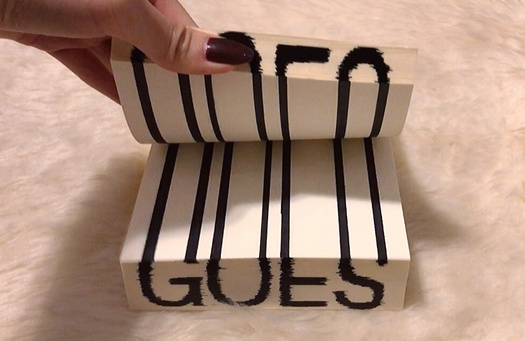Watching, Being Watched
Watching is the most basic behavior we repeat every day. This behavior stems from the fact that we have eyes and a subjective awareness. We wake up every day and start watching until we go to sleep at night and the watching stops. It is one of the most elemental acts that connect people to the world.
My research on the image is based on watching, and I often replace my eyes with the lens of a camera. There are two kinds of watching behaviors: watching with consciousness and watching without consciousness. The image memories that people hold originate from conscious watching, and the camera has become the tool of recording images, so that we have real evidence to support our image memory. Watching is an act without intervention. In Hitchcock’s film Rear Window (1955), the photographer, played by James Stewart, has a tense relationship with an event through his camera, precisely because he has a broken leg and must use a wheelchair. His inability to move freely prevented him from taking action to intervene in what he was watching. The Camera’s intervention, is a surrogate form of participation. This intervention is not targeted on the subject in front of the lens, rather, it works as a tacit agreement with the viewer by which they know that this capture of a moment makes sense to the photographer, and therefore contains value.
In my visual research, I alter that relationship between the photographer (me), the camera (image generation medium) , and the subject. At other times, I weaken the “me” as the photographer and express my intention by highlighting the object. Sometimes, I replace the “camera” with something else, such as a small camera device, eye tracker, etc., to give “watching” more dynamic characteristics on the technical level. In Susan Sontag’s On Photography, the camera is an observation post, but taking pictures is not a passive observation. It satisfies people’s desire to pry, and photographing is to possess what is photographed. It means allocating people in some kind of relationship with the world. Therefore, it is particularly important for the photographer to change the equipment and choose different objects to be photographed. Doing so allows the viewer to replace themselves with other people or objects and rethink their relationship with the world.
Another aspect that needs to be emphasized in my research is the artistry of viewing, which is related to the temporal and spatial relationship of the final presentation of the image and the materials. Watching behavior is based on people’s daily life, and the images generated are extracted from daily life by me. They are independent from the environment, and endowed with meaning, so they can be separated from their context, and become self-realized. These fractured images are like shadows in Plato’s cave: images tamper with the scale of the world, they are scaled down, magnified, edited, and beautified; they are copied and wrapped around our eyes, blurring the boundary between reality and illusion. But unfortunately, people can only rely on the images produced by the mechanical eye as a way to recall what happened in the past, so our memories of the images tend to be surreal.
For me, as a designer and artist, the study of watching is the most fundamental and the most important link between my inner self and my audience. In my study of watching, from giving basic answers to exploring the image style, I take daily life as the starting point of my work. The importance of watching depends on the relationship between seeing and being seen. What to watch and how to watch? These basic questions will continue to accompany me, leading me to give different imagery solutions.
Editor details
Last edited by: Dan Michaelson
Edit access: Everybody
Videos
Connectedly
https://www.youtube.com/watch?v=ePYJcY9EyF4&feature=youtu.be
Connectedly Roll
https://www.youtube.com/watch?v=yHSfLALl7ps&feature=youtu.be
Strolling
https://www.youtube.com/watch?v=5VljVF81aq0&feature=youtu.be
The New Landscape, Eye Tracker demo
https://www.youtube.com/watch?v=NRVwURYmE9c
Editor details
Last edited by: Dan Michaelson
Edit access: Everybody


